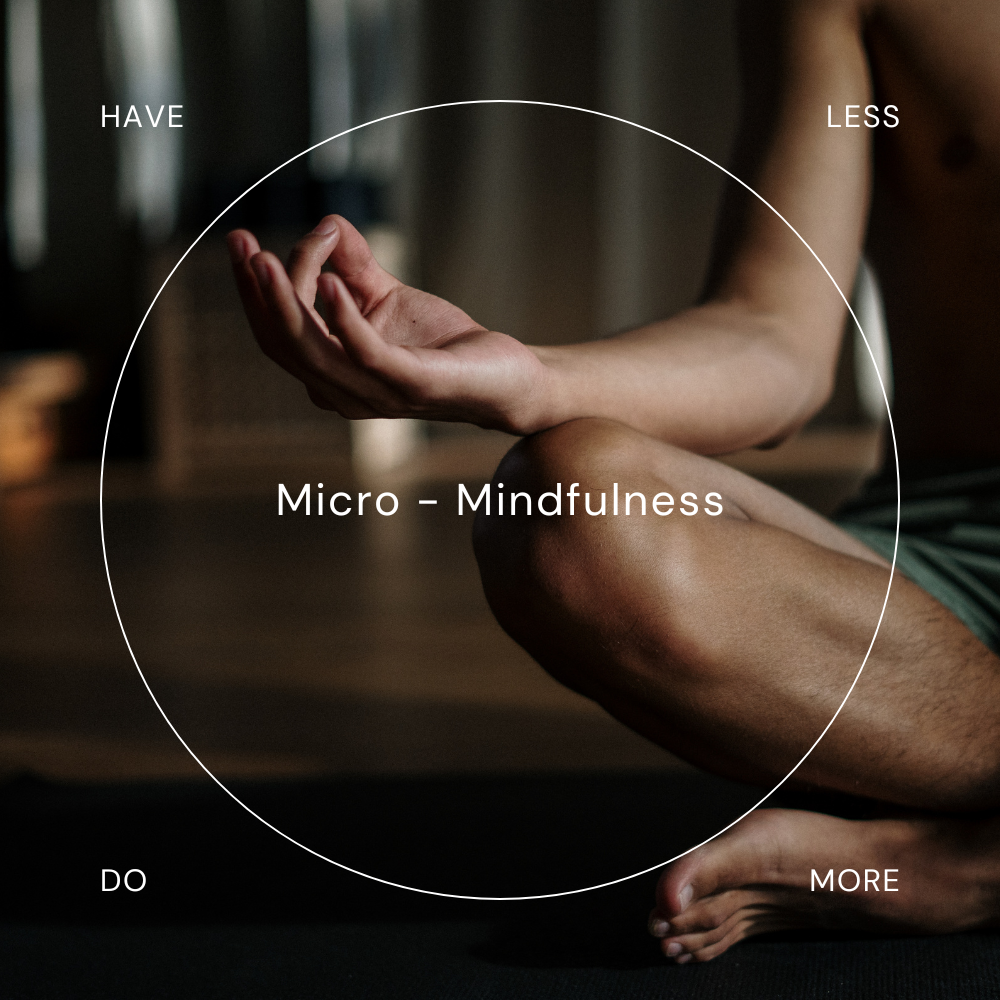Micro-Mindfulness: Finding Calm in 30 Seconds a Day
Introduction
In a rapidly changing world, finding time to slow down can seem unrealistic. However, what if calm doesn’t involve long bouts of meditation? What if only taking 30 seconds could help? Micro-mindfulness is about infusing small moments of awareness into your day-to-day life. These quick breaks — a deep breath, a brief gaze at the sky, or a mindful sip of coffee — give you a moment of refresh and reconnect. At times, it is not necessary to have hours of peace, but rather in the several seconds you devote back to you.

The Importance of Micro-Moments
It might seem common to equate mindfulness with long meditations or silent retreats; however, being present can happen in just 30 seconds. Micro-moments are those minuscule gaps where you intentionally breathe, notice what is around you, or just simply pay attention to how your body is feeling. Those little moments of checking in with yourself are essentially mini resets for your mind; when you pause, your brain receives a signal to slow down, your heart rate slows down, and your thoughts slow down. You may not have complete control over everything happening around you, but you do have the power to choose how you show up in that moment. A few seconds of mindfulness between tasks, before a call, or even when waiting for your cup of tea to steep can truly change your entire energy. After many weeks or months, micro-moments accumulate, and you start to feel yourself responding more calmly, thinking more clearly, and feeling less anxious in your everyday life.
Easy Practices for Busy Minds
You don’t need candles, calm music, or a yoga mat to be mindful. All you need is a few seconds of focused attention. For example, take one deep, slow breath before you open an email. Or, when you are standing in line, feel the weight of your feet on the ground. You may notice that your shoulders drop, your jaw relaxes, and your mind is just a little lighter. Another easy technique is called a 5-second sensory scan — pause and think about what you are able to see, hear, smell, taste, and touch. These moments of focused attention snap you out of autopilot mode and create presence. A small act of placing your hand on your heart for a moment of gratitude can shift your mood. When you practice these short mindful exercises throughout your day, they act as a mental refresh button — allowing you to reset, refocus, and move through your day a little more calmly.

Transforming Everyday Habits Into Mindful Practices
Being mindful doesn’t have to be an added item on your to-do list; it can be built into what you are already doing. In fact, every daily routine you have is an opportunity to slow down. For instance, while brushing your teeth, notice the sound of the water or how the bristles feel against your gums. When taking your first sip of coffee, instead of gulping it down while scrolling through your phone, take a moment and really taste the coffee along with the way the warmth feels to your body, and the aroma. This one moment of pausing the frenetic pace is mindfulness in practice. Every moment matters; even walking from one room to another can become a practice of mindfulness simply by recognizing the feeling in your feet with each step you take. Small shifts can turn normal tasks into moments in time that can feel like an anchor or awareness. Eventually, mindfulness won’t feel like something ‘you have to do’ but something that happens naturally simply as part of your life experience – a gentle reminder to be present, connected, and at ease; even in your busiest days.
The Ripple Effect of Small Stillness
It can easily be a tendency to overlook the powers of short moments, and while it is the quality that we create in these still moments, that matters most, when you take pause, even for just 30 secs, you are giving the functioning of your mind a breath: a stopping time that affects how you respond, engage, speak and connect with others in your personal or professional life context. It is over time that these short moments facilitate resilience. You start to notice that you might catch yourself before cutting back into a state of frustration, you might notice beauty in some of the things that appear small, you start to notice a calm you can create inside of chaos. The ripple effect is not fireworks – it is small and profound. Your calm continues to influence the work that you do, the relationships that you have, the conversations you are a part of, your creativity, in understated yet meaningful ways. It is not about being perfect, it is about returning (over, and over again) to the present moment, no matter how big or small that moment is. Micro mindfulness shows that peace is not a pit stop on your journey, it is creating peace, one moment, and one intention at a time.
Conclusion
Ultimately, mindfulness doesn’t have to be complicated or time consuming. It’s simply being aware of the small moments that are unfolding anyway — and choosing to be fully present in them. You may only need 30 seconds of calm to ignite a new experience in the moment. Once these tiny moments become habitual, life begins to feel lighter, slower, and filled with peace. At times, that can be the only effort required — to breathe mindfully and come home to yourself.
